Exploring New York’s Industrial Past in "Cathedrals of Industry"
Join photographer Michael L. Horowitz for a journey through 50 years of photographs!


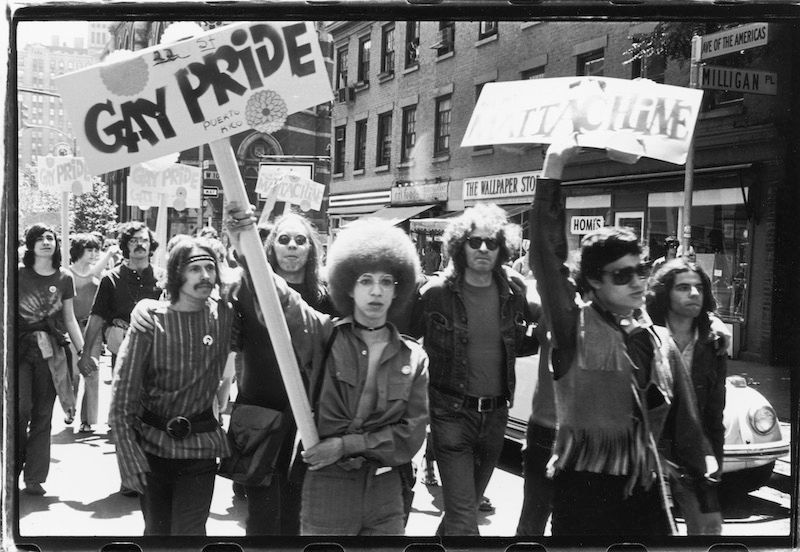
People hold ‘Gay Pride’ and ‘Mattchine’ signs (the Mattachine Society was an early American gay rights organization) during the first Stonewall anniversary march, then known as Gay Liberation Day. They walk up 6th Avenue (Avenue of the Americas) at Milligan Place, New York, June 28, 1970. Photo by Fred W. McDarrah via Fred W. McDarrah Estate
It only seems fitting that in honor of Gay Pride month, we step back and take a look through the lens of one of the most acclaimed figures of the first wave of the gay right’s movement during the 1960’s: the work of the Beat Generation photographer Fred W. McDarrah. His work is featured in a series of public walking tours called “Save the Village: Walking Tours of the Photographs of Fred W. McDarrah.” The tours are led by none other than McDarrah’s own son, Tim McDarrah, with special additions made this month to celebrate Gay Pride. For a taste of what one should expect to find on the tours, take a look at this special sampling of Fred W. McDarrah’s work provided to Untapped Cities, courtesy of the Estate of Fred W. McDarrah.
McDarrah’s work started when he picked up a camera at the 1939 World’s Fair in Queens. He was on the front lines of the gay rights movement as he documented everything and everyone from the Stonewall Riots of ’69 to the work and life of Andy Warhol and Bob Dylan during his time at the famously outspoken alternative newsweekly, The Village Voice.
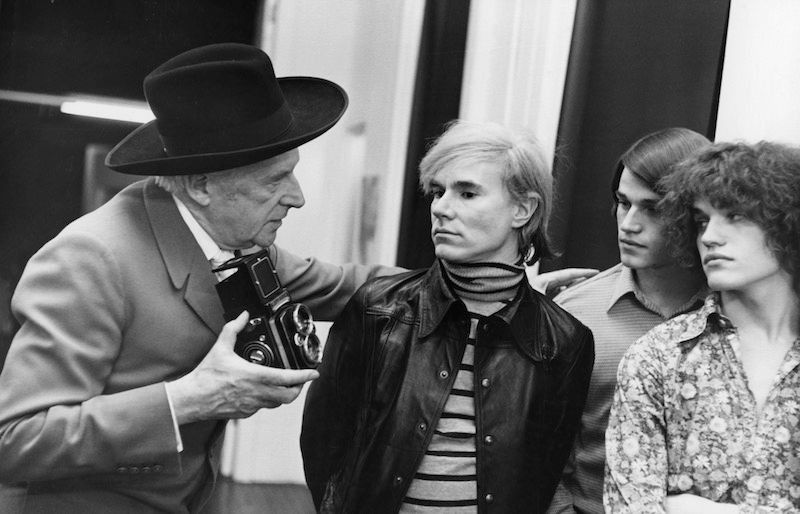
British fashion photographer Cecil Beaton (1904 – 1980) (left) talks with American pop artist Andy Warhol (1928 – 1987) (second left) and twin brothers Jed (1948 – 1996) and Jay Johnson as he takes photographs in Andy Warhol’s studio, the Factory (860 Broadway) on April 24, 1969. Warhol and Jed Johnson were a couple for over ten years. Photo by Fred W. McDarrah via Fred W. McDarrah Estate.
The Save the Village series started after an especially popular showing of Fred McDarrah’s beatnik photography in the Steven Kasher Gallery in Chelsea. Tim says that there was something about these photographs displaying this tumultuous and effervescent time period in particular that people found intriguing. The tours now serve not only as a way for Tim and his family to stay close to their father, but also to educate New Yorkers and those coming to visit NYC about a balance that was at the quintessence of his father’s work: the relationship between progress and preservation.
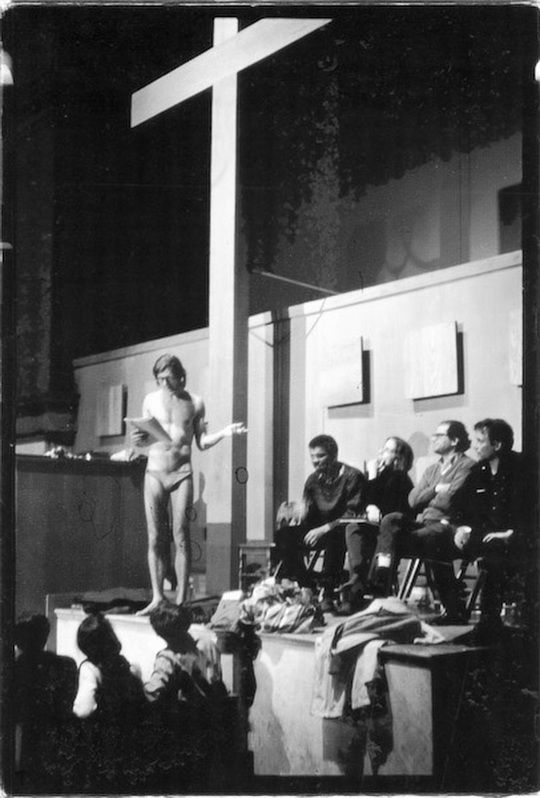 American poet Peter Orlovsky, dressed in underwear and eyeglasses, reads from his collection ‘Clean Asshole Poems’ under a giant wooden cross at Judson Memorial Church, Washington Square South, December 6, 1964. Among those on stage behind him are Gregory Corso (1930 – 2001) (right) and Orlovsky’s long-time companion Allen Ginsberg (1926 – 1997). Photo by Fred W. McDarrah via Fred W. McDarrah Estate.
American poet Peter Orlovsky, dressed in underwear and eyeglasses, reads from his collection ‘Clean Asshole Poems’ under a giant wooden cross at Judson Memorial Church, Washington Square South, December 6, 1964. Among those on stage behind him are Gregory Corso (1930 – 2001) (right) and Orlovsky’s long-time companion Allen Ginsberg (1926 – 1997). Photo by Fred W. McDarrah via Fred W. McDarrah Estate.
“My dad had a strong sense that the city was vanishing around him,” Tim says. “Even in the ’60’s people had this vision that the world was being eliminated. My dad knew this, so he took pictures of people, events, and places that are mostly gone.”
A self-described “groupie,” as Tim says, Fred McDarrah wouldn’t let the preservation rest. Tim recalls that by looking at dates on photos years later, it became clear that on nights his father would tuck Tim and his brother into bed, he would also run down with his camera to snag a couple of shots of Jimi Hendrix who was performing just down the street at Fillmore East before making it home in time to take his kids to school the next morning.
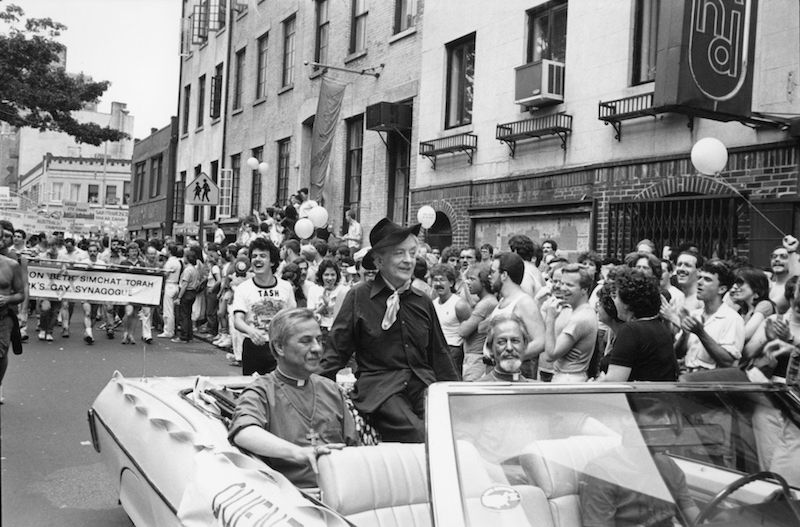
English author Quentin Crisp (born Denis Charles Pratt, 1908 – 1999) (center), with the Church of the Beloved Disciple’s Father John Darcy Noble (1923 – 2003) (left) and Bishop Robert Clement, in the lead car of the annual Gay Pride Day March, as it passes in front of the past and present Stonewall Inn (then a bagel store), June 27, 1982. Behind him are members of Congregation Beth Simchat Torah, New York’s gay synagogue. Photo by Fred W. McDarrah via Fred W. McDarrah Estate.
The main tour will now continue to reflect that quest for documentation and preservation but be recast as Save the Village: Gay Pride– the only illustrated, gay-themed tour in existence according to Tim. The other three tours in the series – East Village, The Artist’s World, and the Beats and Bob Dylan – will also be adjusted to emphasize the role of sexuality and the gay rights movement in the formation of the identities of these influential figures and iconic locations.
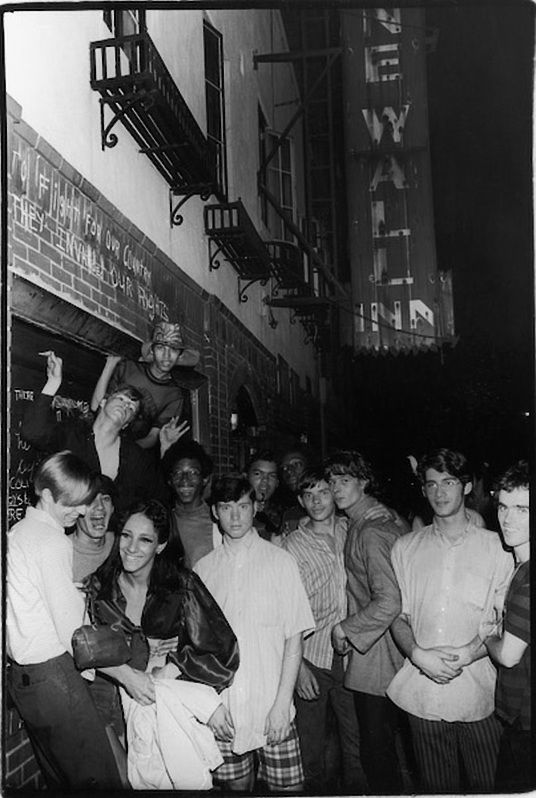 An unidentified group of young people celebrate outside the boarded-up Stonewall Inn, 53 Christopher Street, after riots over the weekend of June 27, 1969. The bar and surrounding area were the site of a series of demonstrations and riots that led to the formation of the modern gay rights movement in the United States. Photo by Fred W. McDarrah via Fred W. McDarrah Estate.
An unidentified group of young people celebrate outside the boarded-up Stonewall Inn, 53 Christopher Street, after riots over the weekend of June 27, 1969. The bar and surrounding area were the site of a series of demonstrations and riots that led to the formation of the modern gay rights movement in the United States. Photo by Fred W. McDarrah via Fred W. McDarrah Estate.
As an added bonus, half-priced tickets are available to those who have a membership to a public library or belong to a historical preservation society.
“No one wants to live in a museum,” Tim says, “but you have to balance where you’ve been with where you’re going.”
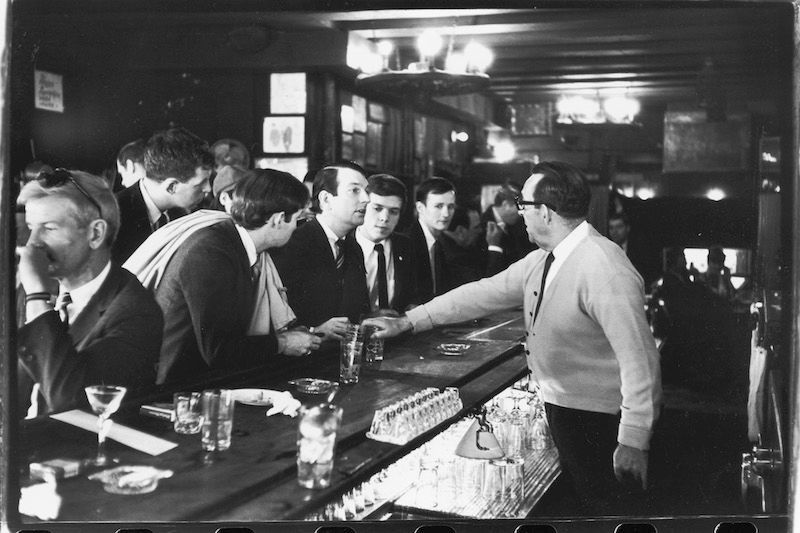
After pouring their drinks, a bartender in Julius’s Bar on West 10th St., refuses to serve John Timmins, Dick Leitsch, Craig Rodwell and Randy Wicker, members of the Mattachine Society, an early American gay rights group, who were protesting New York state liquor laws that prevented serving gay customers, April 21, 1966. Photo by Fred W. McDarrah via Fred W. McDarrah Estate.
Next, check out 10 Notable LGBT Landmarks and Sites in NYC and 7 Spots in NYC Where You Can Drink Like The Beat Generation Writers Did. Get in touch with the author @Erika_A_Stark
Subscribe to our newsletter